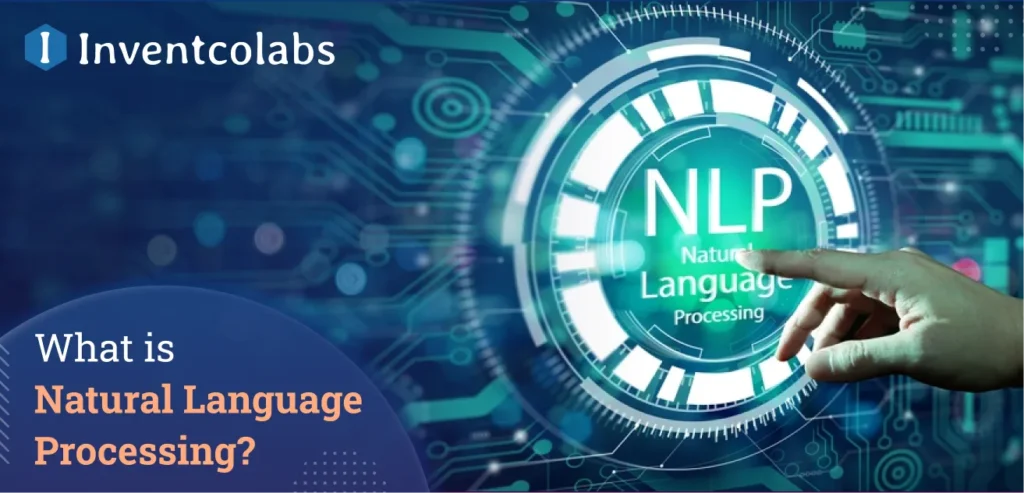Digital technologies have become more familiar in our day-to-day lives than ever before. In the 1940s, programmers fed punch cards into room-sized computers; at that time, no one dreamed that one day we would talk over our smartphones. This infiltration has prompted an explosion of data. Especially, textual data has become more available to the public and across almost every industry.
Now, businesses have a superabundance of information to analyze. Organizations get deep insights from the data and act accordingly to remain ahead of the competitors. However, it becomes stressful for industries to manage such huge data. Here comes natural language processing to take the burden off businesses.
What is Natural Language Processing (NLP)?
Natural language processing is an innovative field of artificial intelligence that combines computer science, AI, and language studies. NLP focuses on enabling computers to comprehend, interpret, and respond to human language in a flawless and meaningful way. Today, organizations have a large volume of data through various communication platforms, such as text messages, social media newsfeeds, emails, video, audio, and more.
The businesses use natural language processing (NLP) software to automatically process this vast data. NLP analyzes the intention of the message and responds in a human tone in real time.
How Natural Language Processing Works?
Before proceeding, it is important to discuss what is natural language processing in AI. The real powerhouse behind natural language processing is machine learning and AI. These two technologies allow NLP to learn from voluminous data. Using algorithms, Machine learning (ML) enables NLP to learn the patterns of data and make predictions about what comes next.
Natural language processing systems learn the data patterns from massive datasets of text. NLP also learns the nuances of language from slang and idioms. NLP is a key component of artificial intelligence. NLP uses AI to take real-life input, whether the language is spoken or written. Then the data is processed and made sense of so that the computer can understand. There are two primary phases of natural language processing: data processing and algorithm development.
Data Processing
Preparing and cleaning textual data are segments of data processing. Data becomes analyzable to the machine at this phase. Data processing brings data in a workable form and highlights features in the data. Now, an algorithm can work with the text. These are the following ways of data processing:
1. Tokenization:
Tokenization replaces sensitive data with non-sensitive data. Tokenization is used to secure financial transactions.
2. Stop Word Removal:
In this phase, common words are removed from the data, unique words offer more information about the remaining text.
3. Lemmatization and Stemming:
Lemmatization gathers different inflected versions of the same word. For example, the word “talking” would fall in its root group “talk”.
4. Part-of-Speech Tagging:
Based on a word’s correspondence to which part of speech, words are tagged, including nouns, verbs, and adjectives.
Once the data is processed, an algorithm is designed to work on it. The following two types of natural language processing algorithms are commonly used.
Algorithm Development
Once the data is processed, an algorithm is designed to work on it. The following two types of natural language processing algorithms are commonly used.
1. Rule-Based System:
It uses cautiously designed linguistic rules. This rule was earlier used to develop NLP, and it is still being used as a mainstream algorithmic component.
2. Machine Learning-Based System:
These algorithms use statistical procedures, they learn to work according to the trained data.
Further, the algorithms can change their method of working over massive datasets as they keep on building and evolving into large ML models.
Applications of Natural Language Processing

Now, it is important to know what natural language processing is used for.
1. Chatbots
Chatbots are a form of AI that is designed to interact with humans in a human-like tone. Chatbots can either respond to specific keywords or they can make full conversations in a human-like tone. Chatbots are developed using ML(machine learning) and NLP, so they can understand the complexity of the English language and look for the original meaning of a sentence. Chatbots learn from human conversations and get better with time. If you’re planning to create one, here’s everything you need to know about how to develop a chatbot.
2. Voice Assistants
These days, voice assistants are taking the stage. Whether it’s Alexa, Siri, or Google Assistant, many users use them to make calls, set alarms, schedule meetings, access the internet, and more. Voice assistants have made our lives much easier. They use natural language processing and voice recognition technologies to understand what humans are telling them to do and perform accordingly.
3. Language Translator
If you need to translate from English to Spanish but you don’t know Spanish, what to do? A language translator is the answer to the struggle. Though it’s not 100% accurate, but still, world well to convert text from one language to another. Google Translate and other language translators use natural language processing to translate the text.
4. Email Classification and Filtering
Emails are the most effective communication method among professionals. Most of us receive thousands of emails each day, but there is limited time to read. Emails are segmented into 3 categories: Primary, Social, and Promotions. The email classification method uses NLP to identify the content of each email and put it in the appropriate category.
Challenges in Natural Language Processing
1. Language Differences
People around the globe use different languages to communicate. There are almost a thousand languages used by humans. Every language has its own grammar, vocabulary, and cultural sophistication. The same word may have different meanings and different contexts. Language differences are the crucial challenge in natural language processing.
2. Training Data
NLP is all about analyzing language efficiently to understand it better. One individual must be immersed in a specific language to become fluent in it. It may take a few years. Similarly, Artificial Intelligence also requires some time to read, listen to, and utilize the language well. An NLP system relies on the training data provided to it. So, if you feed your system questionable or bad datasets, the NLP system would learn the wrong things.
3. Development Time and Resource Requirements
It is important to consider the development time of the NLP system. To develop a trained NLP system, AI must review millions of datasets. If you use an insufficiently powered PC, then AI may take a lifetime to process such a vast amount of data. However, a distributed deep learning model and several GPUs working in coordination can reduce the development time. The training time can be reduced to only a few hours.
Future Of Natural Language Processing In Business and Technology
The future of natural language processing is both thrilling and promising, with various key trends. Present research on NLP explores that it is super useful and is making humans’ connections with technology more natural. The research finds various cutting-edge trends and areas of focus. One significant trend is designing sophisticated transformer models like GPT-4.
This system focuses on language understanding. Researchers are also working hard on contextual understanding to make the NLP system better and beyond. They are trying to develop an NLP system that can grasp nuanced meaning and long-range dependencies on data.
Embracing Multimodal NLP
Another focused area is developing multimodal NLP, which combines language processing with other data types such as images and audio. Further looking ahead, you can expect several groundbreaking benefits of the NLP system in businesses and technology. One significant development is designing the real-time translation devices. These devices flawlessly translate spoken language in real time. These systems are breaking down the language barriers and promoting global communication.
These advancements can have significant benefits on various industries, including healthcare, the IT sector, retail and e-commerce, customer service, media and entertainment, and more. An effective NLP system can boost productivity, improve communication, and drive innovation.
Conclusion
Natural language processing has advanced significantly over the past few years. The system is used in the creation of something that makes our lives better every single day. There are several popular applications of NLP, and a few you may have never heard before. You may have used NLP plenty of times till now, but didn’t realize what it is.
Here, in this article, we have discussed every aspect of what is natural language processing, and beyond. Hope, now, you can have a deep insight into the system and get the idea of how it works, its applications, and the future of NLP.
FAQs
Q1. What is Natural Language Processing Used For?
Ans. NLP system is used in a wide range of areas, including mobile app development, website development, AI software development, and chatbot development. NLP is crucial for businesses that access vast unstructured datasets. NLP systems enable organizations to get valuable insights and automate tasks.
Q2. What is the purpose of natural language processing?
Ans. NLP’s major purpose is to enable computers to understand human language. Further, the system enables computers to generate text and speech that is understandable to humans. NLP is crucial for several tasks, including machine translation, speech recognition, and sentiment analysis.
Q3. What is the advantage of natural language processing?
Ans. NLP enables humans to interact with computers using their own language, and NLP-powered chatbots provide 24*7 customer support. NLP analyzes customers’ queries and replies with personalized messages. An NLP system can predict data trends, patterns, and sentiments, and then provide valuable business insights.
Q4. What are the natural language processing techniques?
Ans. Various techniques and tools work together to enable computers to understand and generate human language. Syntax and semantics, NER (Named Entity Recognition), and sentiment analysis; these are the techniques that work behind an NLP system.




